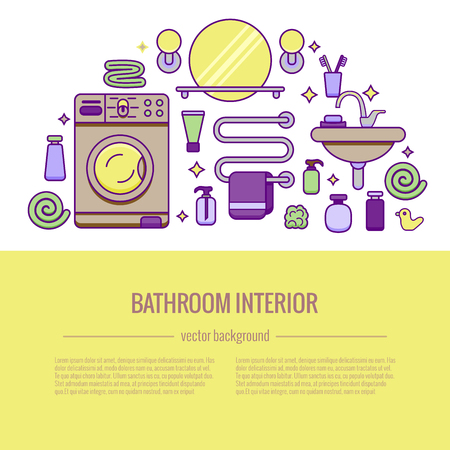1. Planning and Budgeting
Before you swing a hammer or pick out tiles, its important to start your bathroom renovation with a clear plan and budget. Proper planning helps avoid unexpected costs, delays, and design regrets down the road.
Set Your Vision
Think about how you want your new bathroom to look and function. Are you aiming for a modern spa-like retreat, a family-friendly space, or simply updating outdated features? Consider layout changes, storage needs, lighting preferences, and finishes. Collect inspiration from online platforms like Pinterest or Houzz to help define your style.
Create a Realistic Budget
Your budget will guide every decision. Start by determining how much youre willing to invest in the project. Then break it down into categories so you can allocate funds smartly. Heres a simple breakdown of average spending:
| Category | Estimated % of Total Budget |
|---|---|
| Labor | 40% – 60% |
| Fixtures (toilet, tub, sink) | 10% – 20% |
| Cabinetry & Countertops | 10% – 15% |
| Flooring & Tile | 10% – 15% |
| Pipes & Electrical Work | 5% – 10% |
| Paint & Finishes | 5% – 10% |
Prioritize Needs vs. Wants
This step is essential for staying on budget. Make a list of must-haves (like fixing leaks or replacing old plumbing) versus nice-to-haves (like heated floors or high-end fixtures). Focus your spending on essentials first. You can always upgrade certain elements later if your budget allows.
Sample Prioritization List:
| Must-Haves | Nice-to-Haves |
|---|---|
| Replace leaking shower valve | Add rainfall showerhead |
| Install new toilet for better efficiency | Add smart toilet with bidet features |
| Add more storage with new vanity cabinet | Select custom cabinetry design |
| Improve lighting over mirror area | Add ambient LED accent lighting under vanity |
Tips to Stay in Control Financially:
- Add a buffer: Set aside at least 10-15% of your total budget for unexpected costs.
- Avoid last-minute changes: Stick to your plan to prevent cost overruns.
- Get multiple quotes: Compare estimates from different contractors to ensure fair pricing.
- Track expenses: Use a spreadsheet or budgeting app to monitor every dollar spent.
A clear plan and realistic budget are the foundation of a successful bathroom remodel. With these steps, youll be ready to move forward confidently into the next phase of your renovation journey.
2. Design and Layout
Before you start tearing out tiles or picking paint colors, its important to plan a bathroom layout that suits your lifestyle and makes the most of your space. Whether youre updating a small powder room or remodeling a full master bath, thoughtful design is key to both function and style.
Choose the Right Layout
Start by evaluating how you currently use your bathroom and what changes would improve your daily routine. Do you need more storage? Would a double vanity make mornings easier? Is a walk-in shower more practical than a tub?
Common Bathroom Layouts
| Layout Type | Description | Best For |
|---|---|---|
| Three-Piece Bathroom | Includes sink, toilet, and either a shower or tub. | Small homes or guest bathrooms |
| Four-Piece Bathroom | Includes sink, toilet, shower, and separate tub. | Master bathrooms or larger spaces |
| Jack-and-Jill Bathroom | Shared between two bedrooms with dual entrances. | Families with kids or siblings sharing rooms |
| Powder Room (Half Bath) | Includes just a toilet and sink. | Main floor guest use |
Consider Flow and Space
Think about how people move through the bathroom. Make sure there’s enough clearance between fixtures so it doesn’t feel cramped. The door should open without hitting anything, and drawers or cabinets shouldn’t block walkways when open.
Tips for Better Bathroom Flow:
- Avoid placing the toilet as the first thing you see when entering.
- If possible, separate wet areas (shower/tub) from dry areas (vanity/toilet).
- Use sliding doors or pocket doors in tight spaces to save room.
Select Fixtures, Materials, and Finishes
Your choices here will set the tone for the entire bathroom. Aim for a cohesive look that reflects your personal taste while also being practical for everyday use.
Fixture & Finish Selection Guide:
| Element | Options to Consider | Tips |
|---|---|---|
| Sinks & Vanities | Pedestal, wall-mounted, freestanding, double-sink vanities | Select based on space and storage needs |
| Showers & Tubs | Walk-in shower, tub-shower combo, freestanding tub | Walk-ins are ideal for accessibility; tubs are good for families with kids |
| Flooring | Ceramic tile, vinyl plank, natural stone | Go for water-resistant and slip-resistant materials |
| Lighting Fixtures | Sconces, overhead lights, LED mirrors | Add layers of lighting—task, ambient, and accent—for best results |
| Finishes & Colors | Chrome, brushed nickel, matte black; neutral tones or bold accents | Stick to a consistent palette to keep it visually balanced |
Aesthetic Tips:
- If youre going for a modern look, consider clean lines and minimal hardware.
- A farmhouse style might include shiplap walls and vintage-inspired fixtures.
- Spa-inspired bathrooms often feature natural materials like wood tones and soft lighting.
The design phase is where creativity meets practicality. Take your time exploring options that align with how you live—and dont forget to measure twice before finalizing any layout!

3. Hiring Contractors and Obtaining Permits
Once youve got a clear vision for your bathroom renovation, its time to bring in the pros. Hiring experienced and licensed contractors is one of the most important steps in ensuring your project is completed safely, legally, and on budget.
Research and Hire Licensed Professionals
Start by searching for local contractors who specialize in bathroom remodeling. Make sure they are licensed, insured, and have experience with similar projects. A quick search on trusted websites like Angi (formerly Angie’s List), Houzz, or even Google Reviews can help you identify reputable professionals in your area.
What to Look For:
- Valid contractor license in your state
- General liability insurance and workers compensation coverage
- Experience with bathroom renovations
- Positive customer reviews and ratings
Gather Multiple Quotes
Dont settle on the first contractor you meet. Its a good idea to get at least three estimates to compare pricing, timelines, and scope of work. Be sure each quote includes a detailed breakdown of materials, labor costs, estimated timeline, and payment schedule.
Sample Quote Comparison Table:
| Contractor | Total Estimate | Timeline | Includes Materials? | Warranty Offered? |
|---|---|---|---|---|
| ABC Renovations | $12,000 | 4 weeks | Yes | 1 year |
| HomePro Services | $10,500 | 5 weeks | No | 6 months |
| Elite Bath Co. | $13,200 | 3.5 weeks | Yes | 2 years |
Check References and Past Work
A trustworthy contractor should be willing to provide references from past clients. Don’t hesitate to call those references or even ask if you can view completed projects. This gives you confidence that the contractor can deliver quality work.
Questions to Ask References:
- Was the project completed on time and within budget?
- Were there any issues during the renovation?
- How was the communication throughout the process?
- Would you hire them again?
Secure Necessary Permits Based on Local Building Codes
Most major bathroom renovations require permits—especially if youre moving plumbing lines, changing electrical layouts, or altering structural elements. Check with your city or countys building department to find out what’s required in your area.
You May Need Permits For:
- Plumbing modifications
- Electrical upgrades or changes
- Additions or layout changes that affect walls or structure
- Installing new windows or doors
If youre working with a contractor, they often handle permit applications for you—but always confirm this upfront. Doing the work without proper permits can lead to fines or problems when selling your home later.
This step ensures that your renovation is up to code and helps avoid costly mistakes down the line.
4. Demolition and Prep Work
Now that youve planned your bathroom renovation and selected your new materials, its time to roll up your sleeves and start the demolition and prep work. This phase is all about safely removing old fixtures, flooring, and drywall while making sure your space is ready for the new installation.
Safely Remove Old Fixtures
Before you start tearing things out, shut off water and electricity to the bathroom. Remove items like the toilet, sink, vanity, bathtub or shower unit with care. If youre not planning to reuse them, consider donating usable fixtures to a local Habitat for Humanity ReStore.
Tools You Might Need:
| Tool | Purpose |
|---|---|
| Pry bar | Removing trim, tiles, and old cabinetry |
| Screwdriver/Drill | Unscrewing fixtures and hardware |
| Utility knife | Cutting caulk and drywall sections |
| Reciprocating saw | Cutting through old framing or pipes if needed |
| Shop vac | Cleaning up debris as you go |
Tear Out Flooring and Drywall
If youre replacing tile or vinyl flooring, use a floor scraper or pry bar to lift it up. Be cautious of any subfloor damage—this will need to be repaired before installing new floors. For drywall, score around areas you plan to remove and gently pull away sections. Watch for hidden wires and pipes!
Check Plumbing and Wiring Infrastructure
This is the perfect time to inspect what’s behind the walls. Check that plumbing lines are in good shape—no corrosion or leaks—and ensure wiring meets current electrical codes. If youre adding outlets, lighting, or moving fixtures around, now’s the time to rough-in those changes.
Inspection Checklist:
| Task | Status Check |
|---|---|
| Water supply lines free of corrosion/leaks? | ✓ Yes / ✗ No |
| P-traps and drain pipes properly aligned? | ✓ Yes / ✗ No |
| Electrical boxes secured and grounded? | ✓ Yes / ✗ No |
| Circuit breakers labeled correctly? | ✓ Yes / ✗ No |
| Sufficient GFCI outlets planned? | ✓ Yes / ✗ No |
Protect Surrounding Areas
Use plastic sheeting or tarps to seal off other rooms from dust. Cover vents so debris doesn’t spread through your HVAC system. Keep tools organized in one area to avoid accidents during demolition.
Tip:
If this part feels overwhelming or youre unsure about dealing with plumbing or electrical systems, dont hesitate to hire licensed professionals for those tasks.
This step lays the foundation for everything that follows—taking your time here ensures smoother progress later in your remodel.
5. Installation and Finishing Touches
Now that the prep work is done, its time to bring your bathroom remodel to life with the installation phase. This step involves putting everything in place—from plumbing and electrical systems to tiles and vanities—followed by the final details that give your space a polished, finished look.
Install Plumbing and Electrical Systems
Start with the rough-in for plumbing and electrical. This includes running new pipes, setting up drain lines, and wiring for lights, outlets, fans, or heated floors. Make sure all installations meet local building codes. Hiring licensed professionals ensures safety and compliance.
Checklist for Plumbing and Electrical:
| Task | Description |
|---|---|
| Water Supply Lines | Install new hot and cold water lines as needed |
| Drainage System | Ensure proper slope and venting for drains |
| Electrical Wiring | Add new circuits for lighting, GFCI outlets, fans, etc. |
| Fixture Hookups | Prepare connections for sinks, showers, toilets, and bathtubs |
Cabinetry and Vanity Installation
Once systems are in place, you can install cabinetry and vanities. Be sure they’re level and securely anchored to wall studs. If youre adding a double vanity or custom storage units, verify measurements carefully before installation.
Laying Tiles and Flooring
Tiling gives your bathroom style and durability. Lay floor tiles first, followed by wall tiles in areas like the shower or backsplash. Choose moisture-resistant materials such as porcelain or ceramic tile for best results.
Tiling Tips:
- Use spacers to maintain consistent grout lines
- Select non-slip tiles for flooring
- Seal grout after it cures to prevent moisture damage
Add Fixtures and Hardware
This is where your bathroom starts looking complete. Install faucets, showerheads, towel bars, mirrors, toilet paper holders, and light fixtures. Double-check alignments for aesthetic appeal.
The Final Finishes: Paint & Quality Check
Select a mildew-resistant paint designed for bathrooms—typically semi-gloss or satin finish. Stick with neutral colors if you plan to resell your home soon; otherwise, express your style!
Your final task is a full quality check:
- No leaks from plumbing fixtures?
- Lamps and outlets working correctly?
- Cabinets open smoothly?
- No gaps in tile grout or caulking?
A careful inspection ensures everything works properly—and that you’ll enjoy your beautiful new bathroom worry-free.

